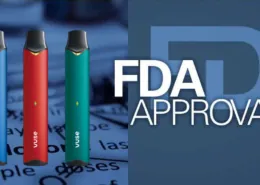The Debate on Vaping Regulations in Argentina and Potential Reforms
Argentina has taken a strict regulatory approach to vaping products like e-cigarettes and heated tobacco devices. While vape use itself is not illegal, since 2011 the government has banned the commercialization, importation, distribution, promotion and advertising of e-cigarettes. And in 2022, heated tobacco products also became prohibited.
This blanket ban contrasts with vaping’s growing popularity worldwide among smokers looking for less harmful alternatives. Around one million people now vape in Argentina through the informal market. But health agencies assert e-cigarettes and heated tobacco pose risks and lack evidence of benefits.
Argentina’s Rationale for Prohibiting Vapes
The Ministry of Health and organizations like ANMAT prohibit vaping products based on several key concerns:
- Potential health risks from vape emissions exposure
- Lack of long-term scientific data on their effects
- Doubts about efficacy for quitting conventional smoking
- Fears vaping leads to dual cigarette and e-cig use
- Insufficient evidence they are less harmful than regular cigarettes
- Allowing unregulated recreational vape products normalized nicotine consumption and addiction
Officials argue employing the precautionary principle to ban vapes until more data exists is appropriate public health policy. But others counter this overlooks emerging evidence and takes an overly paternalistic view limiting adult choice.
Benefits of Vaping Compared to Smoking
While not harmless, vaping advocates argue it does minimize exposure to the estimated 7,000 chemicals and over 60 known carcinogens in cigarette smoke when substituting for smoking.
UK public health bodies have acknowledged vaping’s harm reduction potential, with best estimates showing e-cigarettes are at least 95% less risky than smoking. There is also increasing evidence of their effectiveness for smoking cessation and dual use gradually declining with long-term adoption.
So banning safer alternatives contradicts harm reduction principles, forcing people who cannot or will not quit nicotine to keep smoking – burdening public health. More nuanced regulation of quality-controlled, adult-targeted vaping could strike a balance between risks and benefits compared to prohibition.
Calls in Argentina to Reform Vaping Laws
In light of the issues above, some entities in Argentina want reformed regulations that don’t simply ban vaping but create an adult-access market with safety controls.
Potential regulatory changes proposed include:
- Allowing regulated sale of tested, nicotine-limited vaping products to adult smokers as less harmful alternatives to cigarettes.
- Implementing manufacturing and testing standards for vape devices, e-liquids and emissions.
- Enforcing child-proof packaging, health warnings, accurate labeling, and marketing restrictions.
- Taxing vape products differently than cigarettes to continue discouraging smoking.
- Ongoing scientific assessment of vaping effects for iterative policy improvements over time.
- Public education so people make informed choices weighing pros and cons of vaping versus smoking.
More pragmatic vape regulation recognizes adults’ right to access and information on lower-risk options, with safety guards in place. Finding the right public health balance remains a complex challenge. But an outright vaping prohibition seems increasingly untenable amid emerging reduced harm evidence.
Comparing Regulation in Other Countries
Argentina’s total vaping ban stands in contrast to regulatory models adopted elsewhere:
- United Kingdom: UK health authorities have endorsed vaping for smoking cessation and harm reduction. Vape products face quality and safety standards but adults can access licensed e-cigarette products.
- United States: The FDA regulates vaping products, banning unauthorized sales but permitting approved products for adult access. Flavors have been limited and marketing is restricted to reduce youth appeal.
- European Union: The EU’s Tobacco Products Directive sets nicotine limits for e-liquids along with childproof packaging and labeling requirements. But vapes remain available to adult consumers.
- Canada: Vaping legislation varies by province, but Health Canada takes a risk-proportionate approach. Rules aim to discourage youth uptake while allowing access for informed adults.
These frameworks show vaping can be regulated more flexibly to balance availability for adult smokers against youth protections.
A Public Health Opportunity?
Rather than a blanket prohibition, Argentina has a chance to implement more nuanced vaping policies aligned with public health goals of reducing smoking-related illness and death. With caution and smart controls, potentially allowing regulated access to lower-risk non-combustibles for adult smokers could deliver substantial benefits versus an outright ban. But the debate involves multiple complex considerations around individual liberties versus government protections. Finding the right policy balance remains an evolving challenge.
- Bestselling Vapes in UK After Disposable Ban: What to Stock 2025 - August 8, 2025
- Argentina Debates Stricter Vape Laws Amid Prohibition Failures - August 8, 2025
- Nigeria Advocacy Group Urged to Hike Tobacco & Vape Tax by 100% - August 8, 2025





 flum float review
flum float review